The Assembly Rooms in Bath
- Ballroom at the Assembly Rooms, Bath
- Tearoom at the Assembly Rooms, Bath
- The Octagon at the Assembly Rooms, Bath
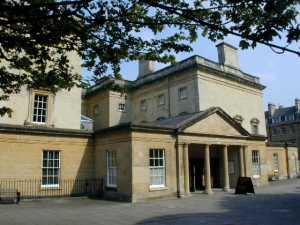
- The Assembly Rooms
- Photo LGB
[click on the picture to enlarge it]
Opened in 1771 under the name of «Upper Rooms“to distinguish them from the”Lower Rooms" (an older building - built in 1708 and pulled down in 1820 - close to the Abbey), the Assembly Rooms were built by John Wood the Younger ; they were the focus of the fashionable social life (like the Pump Room) and of musical entertainments ; balls were also given.
Ballroom at the Assembly Rooms, Bath
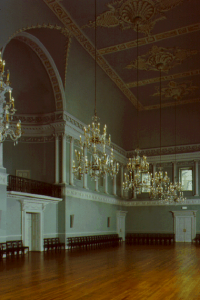
- Ballroom at the Assembly Rooms
- [click on the picture to enlarge it]
The more solemn ballroom is of the elaborate Corinthian order, whereas the tea room has Ionic columns, on the lower floor, owing to the practice of increasing the complexity of the decoration according to the formality of the rooms.
Dancing music would be played, in the evening, first from 6 pm to 8 pm minuets where each couple in succession danced alone watched by the others, then after refreshments country dances in which all took part till 11 pm.
A satirical view of the balls was given by Rowlandson.
They are evoked in Smollett’s novel Humphry Clinker, and in the films based on Jane Austen’s novels, as well as Sheridan’s The Rivals.
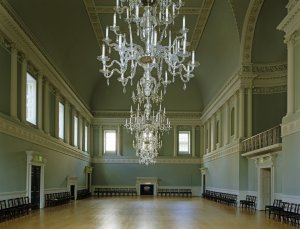
- Ballroom at the Assembly Rooms
- Bridgeman Art Library
[click on the picture to enlarge it]
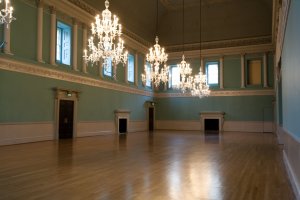
- Ballroom at the Assembly Rooms
- Bridgeman Art Library
[click on the picture to enlarge it]
Tearoom at the Assembly Rooms, Bath
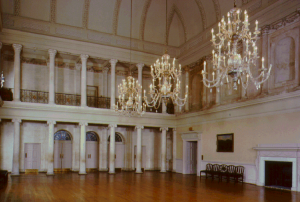
- Tearoom at the Assembly Rooms
- [click on the picture to enlarge it]
In Rowlandson’s watercolours The Comforts of Bath, visitors are shown having breakfast in the Assembly Rooms. Smollett’s characters also evoke tea parties.
The Octagon at the Assembly Rooms, Bath
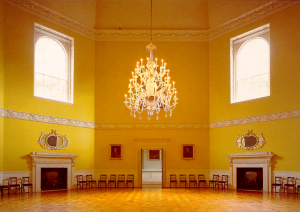
- The Octagon at the Assembly Rooms
- [click on the picture to enlarge it]
The Octagon links the ball-room and tea-room; it was used for music and card-playing, as Rowlandson shows.

